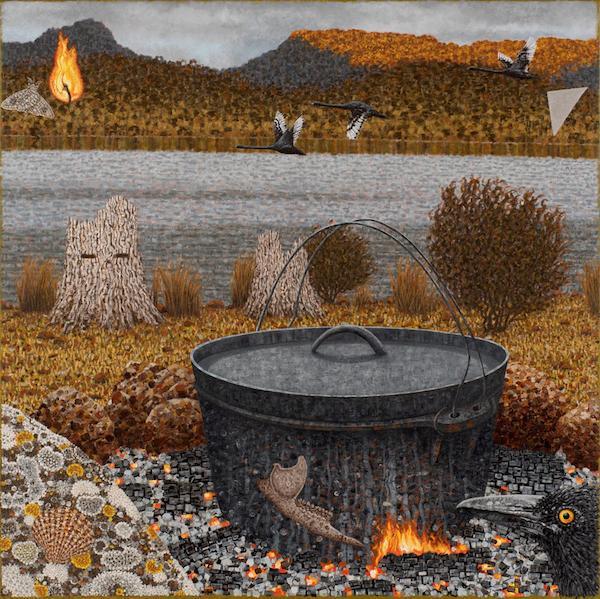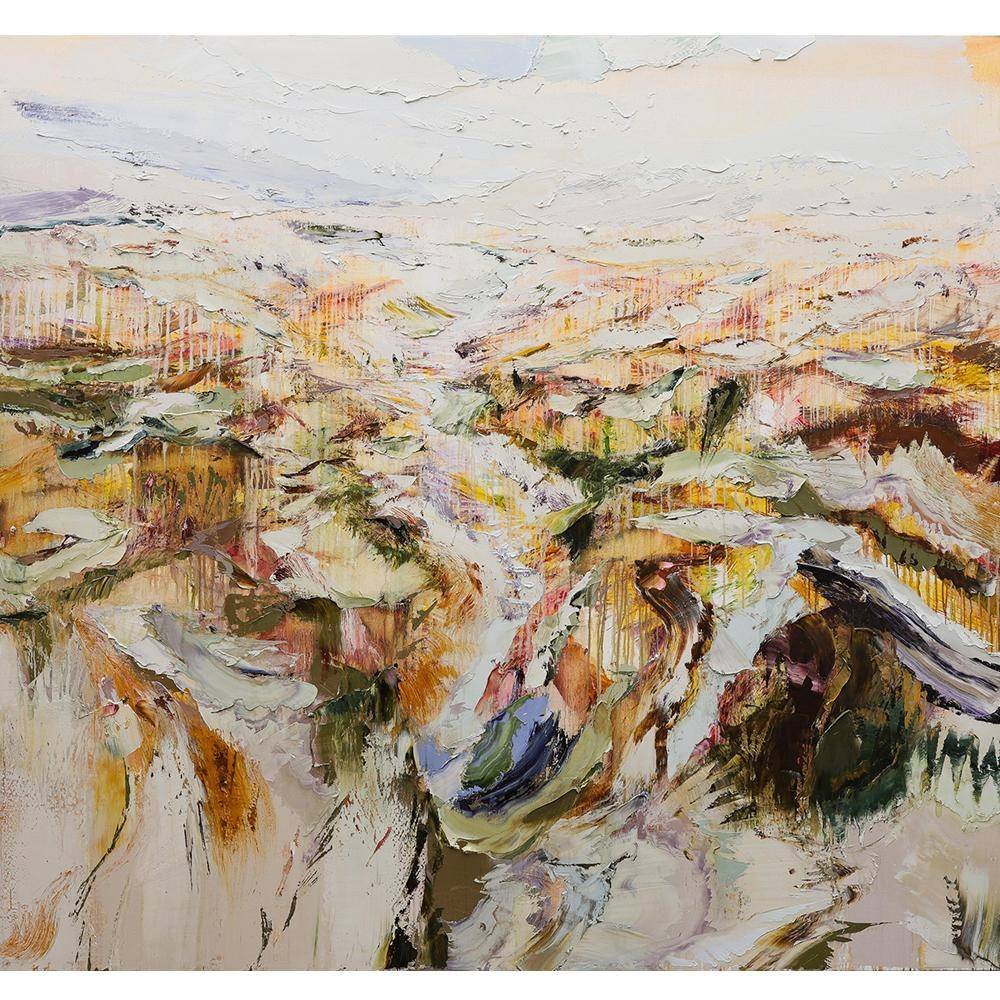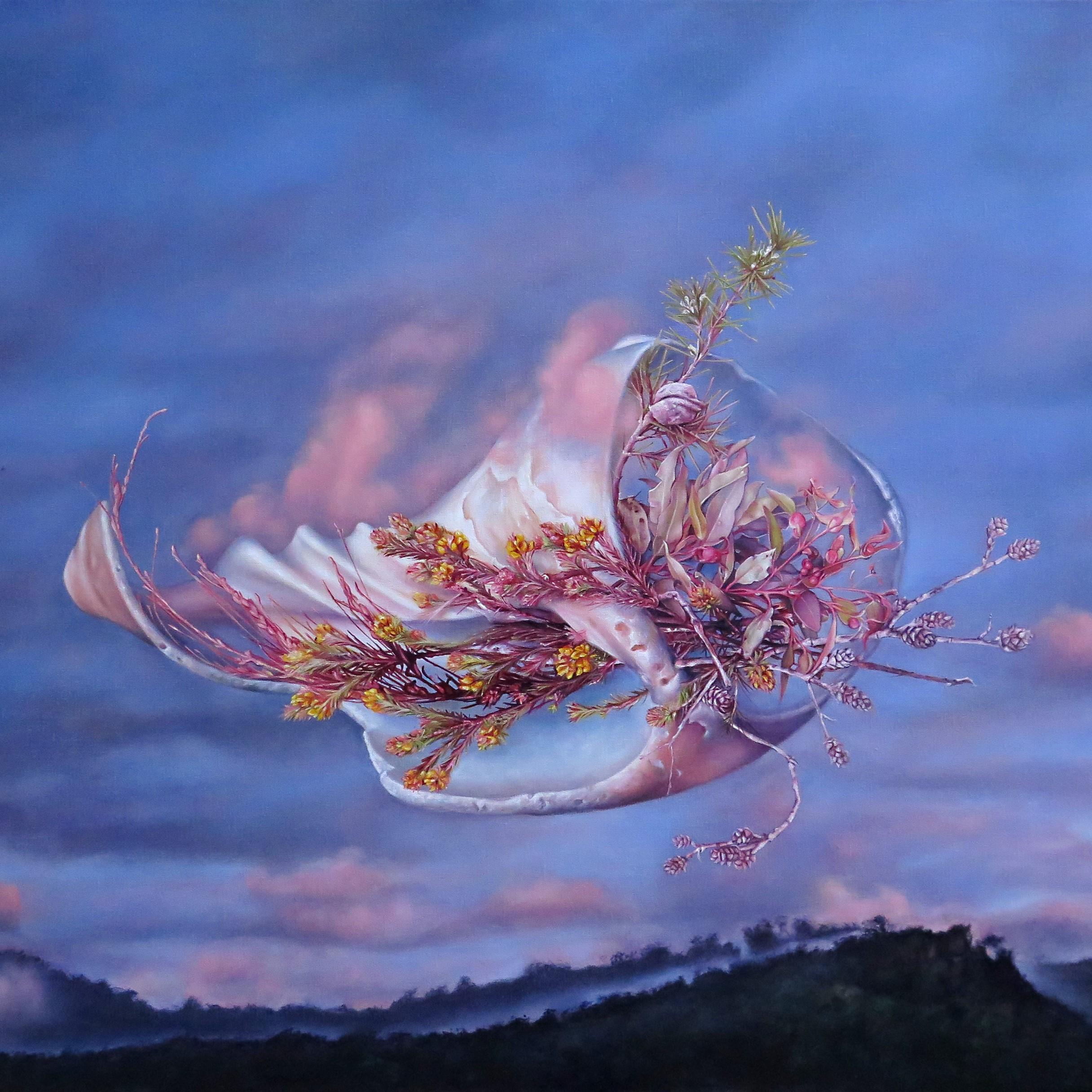

Richard Wastell, Preservations, 2022. Oil and pumice on acrylic ground and linen, 122 x 122cm. Courtesy: the artist and Bett Gallery.
The title of this exhibition is Preservations. Something is being preserved here in these paintings, something precious and worth protecting. Something venerated. But what?
Many of the works in this exhibition contain depictions of scallop shells. They look a little out of place, appearing like dreams within these Tasmanian High Country landscapes and campsites. It might help to know that I grew up on the Tasmanian South East Coast. The humble scallop shell is one of the many washed up things that kicked around the backyard when I was a kid. They have come to represent where I am from.
One of the earliest examples of prehistoric art is a stone hand-axe from Norfolk, England, probably several hundred thousand years old, the edge of which has been carefully knapped around the fossilised shell of a small bivalve mollusc. It looks like a tiny scallop shell but is actually a type of spiny oyster.
Upon the Camino de Santiago, a pilgrimage route in northwestern Spain, the way is marked by scallop shells fixed to buildings along the road and pilgrims carry scallop shells upon their person as identifying symbols. The radial structure of the shell represents the many pilgrimage paths which converge upon a single point.
It was my good fortune to grow up on the beaches of Tasmania’s South East Coast but my pilgrimage paths are to the Central Plateau Lake Country. This is the land I love the most, land which sustains me and that I wish to hold dear and share with others. Along with the daily practice of painting in the studio, these pilgrimages remain my preservations.



